Mohammad Soleymani
Discrete Facial Encoding: : A Framework for Data-driven Facial Display Discovery
Oct 02, 2025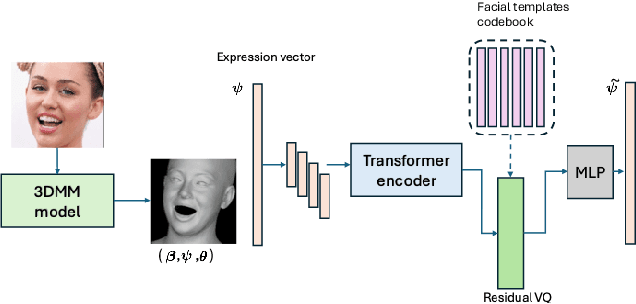

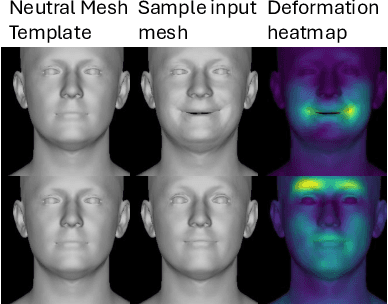
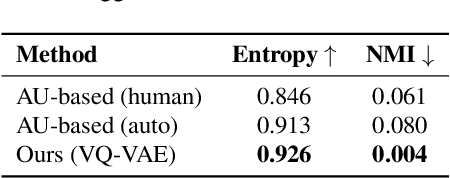
Abstract:Facial expression analysis is central to understanding human behavior, yet existing coding systems such as the Facial Action Coding System (FACS) are constrained by limited coverage and costly manual annotation. In this work, we introduce Discrete Facial Encoding (DFE), an unsupervised, data-driven alternative of compact and interpretable dictionary of facial expressions from 3D mesh sequences learned through a Residual Vector Quantized Variational Autoencoder (RVQ-VAE). Our approach first extracts identity-invariant expression features from images using a 3D Morphable Model (3DMM), effectively disentangling factors such as head pose and facial geometry. We then encode these features using an RVQ-VAE, producing a sequence of discrete tokens from a shared codebook, where each token captures a specific, reusable facial deformation pattern that contributes to the overall expression. Through extensive experiments, we demonstrate that Discrete Facial Encoding captures more precise facial behaviors than FACS and other facial encoding alternatives. We evaluate the utility of our representation across three high-level psychological tasks: stress detection, personality prediction, and depression detection. Using a simple Bag-of-Words model built on top of the learned tokens, our system consistently outperforms both FACS-based pipelines and strong image and video representation learning models such as Masked Autoencoders. Further analysis reveals that our representation covers a wider variety of facial displays, highlighting its potential as a scalable and effective alternative to FACS for psychological and affective computing applications.
Social-MAE: A Transformer-Based Multimodal Autoencoder for Face and Voice
Aug 24, 2025Abstract:Human social behaviors are inherently multimodal necessitating the development of powerful audiovisual models for their perception. In this paper, we present Social-MAE, our pre-trained audiovisual Masked Autoencoder based on an extended version of Contrastive Audio-Visual Masked Auto-Encoder (CAV-MAE), which is pre-trained on audiovisual social data. Specifically, we modify CAV-MAE to receive a larger number of frames as input and pre-train it on a large dataset of human social interaction (VoxCeleb2) in a self-supervised manner. We demonstrate the effectiveness of this model by finetuning and evaluating the model on different social and affective downstream tasks, namely, emotion recognition, laughter detection and apparent personality estimation. The model achieves state-of-the-art results on multimodal emotion recognition and laughter recognition and competitive results for apparent personality estimation, demonstrating the effectiveness of in-domain self-supervised pre-training. Code and model weight are available here https://github.com/HuBohy/SocialMAE.
* 5 pages, 3 figures, IEEE FG 2024 conference
Energy Efficiency Optimization of Finite Block Length STAR-RIS-aided MU-MIMO Broadcast Channels
Jun 13, 2025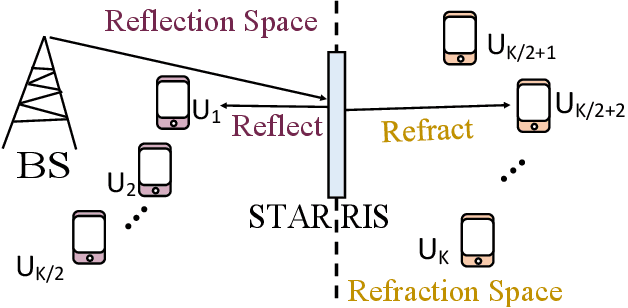
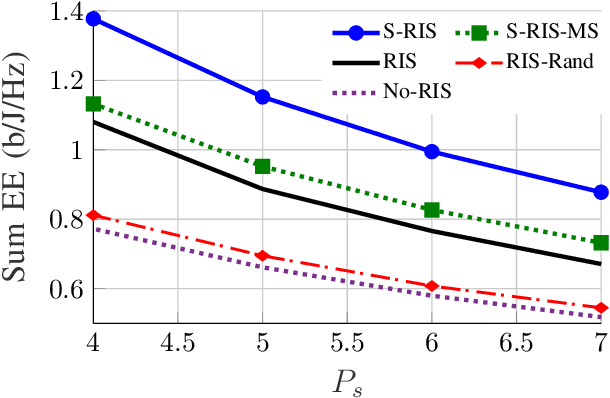
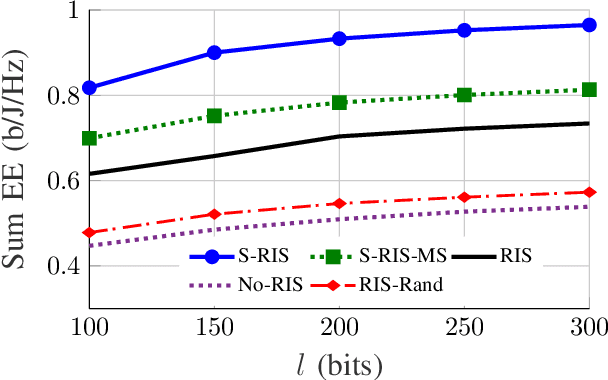
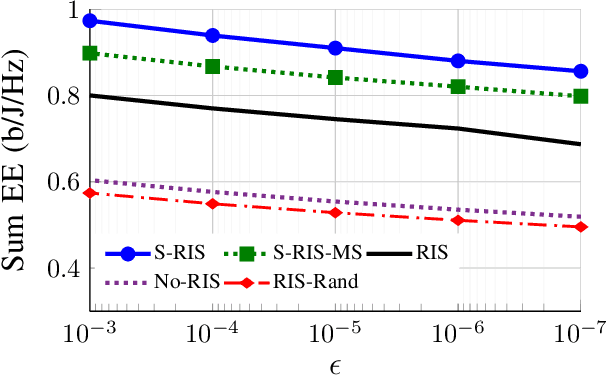
Abstract:Energy-efficient designs are proposed for multi-user (MU) multiple-input multiple-output (MIMO) broadcast channels (BC), assisted by simultaneously transmitting and reflecting (STAR) reconfigurable intelligent surfaces (RIS) operating at finite block length (FBL). In particular, we maximize the sum energy efficiency (EE), showing that STAR-RIS can substantially enhance it. Our findings demonstrate that the gains of employing STAR-RIS increase when the codeword length and the maximum tolerable bit error rate decrease, meaning that a STAR-RIS is more energy efficient in a system with more stringent latency and reliability requirements.
Face-LLaVA: Facial Expression and Attribute Understanding through Instruction Tuning
Apr 09, 2025
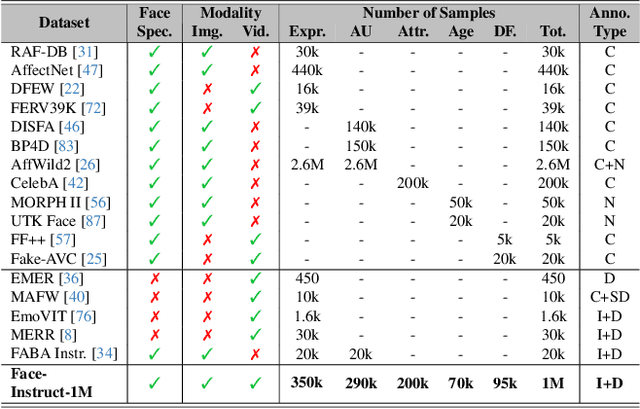

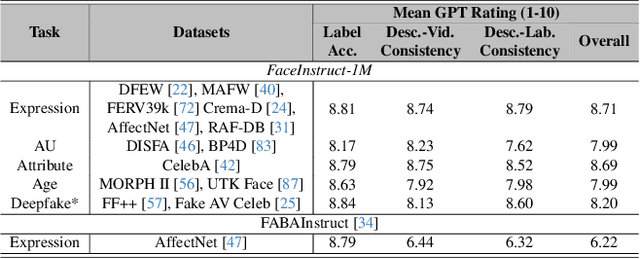
Abstract:The human face plays a central role in social communication, necessitating the use of performant computer vision tools for human-centered applications. We propose Face-LLaVA, a multimodal large language model for face-centered, in-context learning, including facial expression and attribute recognition. Additionally, Face-LLaVA is able to generate natural language descriptions that can be used for reasoning. Leveraging existing visual databases, we first developed FaceInstruct-1M, a face-centered database for instruction tuning MLLMs for face processing. We then developed a novel face-specific visual encoder powered by Face-Region Guided Cross-Attention that integrates face geometry with local visual features. We evaluated the proposed method across nine different datasets and five different face processing tasks, including facial expression recognition, action unit detection, facial attribute detection, age estimation and deepfake detection. Face-LLaVA achieves superior results compared to existing open-source MLLMs and competitive performance compared to commercial solutions. Our model output also receives a higher reasoning rating by GPT under a zero-shot setting across all the tasks. Both our dataset and model wil be released at https://face-llava.github.io to support future advancements in social AI and foundational vision-language research.
DiTaiListener: Controllable High Fidelity Listener Video Generation with Diffusion
Apr 05, 2025Abstract:Generating naturalistic and nuanced listener motions for extended interactions remains an open problem. Existing methods often rely on low-dimensional motion codes for facial behavior generation followed by photorealistic rendering, limiting both visual fidelity and expressive richness. To address these challenges, we introduce DiTaiListener, powered by a video diffusion model with multimodal conditions. Our approach first generates short segments of listener responses conditioned on the speaker's speech and facial motions with DiTaiListener-Gen. It then refines the transitional frames via DiTaiListener-Edit for a seamless transition. Specifically, DiTaiListener-Gen adapts a Diffusion Transformer (DiT) for the task of listener head portrait generation by introducing a Causal Temporal Multimodal Adapter (CTM-Adapter) to process speakers' auditory and visual cues. CTM-Adapter integrates speakers' input in a causal manner into the video generation process to ensure temporally coherent listener responses. For long-form video generation, we introduce DiTaiListener-Edit, a transition refinement video-to-video diffusion model. The model fuses video segments into smooth and continuous videos, ensuring temporal consistency in facial expressions and image quality when merging short video segments produced by DiTaiListener-Gen. Quantitatively, DiTaiListener achieves the state-of-the-art performance on benchmark datasets in both photorealism (+73.8% in FID on RealTalk) and motion representation (+6.1% in FD metric on VICO) spaces. User studies confirm the superior performance of DiTaiListener, with the model being the clear preference in terms of feedback, diversity, and smoothness, outperforming competitors by a significant margin.
The Wideband Analysis of the Impact of I/Q Imbalance on THz Communication
Feb 07, 2025Abstract:The terahertz (THz) band is a promising solution to the increasing data traffic demands of future wireless networks. However, developing transceivers for THz communication is a complex and toilsome task due to the difficulty in designing devices that operate at this frequency and the impact of hardware impairments on performance. This paper investigates the impact of radio frequency (RF) impairment, in-phase/quadrature imbalance (IQI). To this end, we express an IQI model for the THzspecific array-of-subarrays (AoSA) architecture considering the unique features of THz communication; vast bandwidth, severe power drawdown, and pencil-like beams. We further model the impact of IQI in the power limited regime in order to investigate the power and ultra-wideband trade-off. To achieve this, we express the spectral efficiency in terms of wideband slope and bit energy to noise ratio which are the two important information theoretic metrics that reveals the performance of the ultrawideband systems as in THz communication. Our results show that THz systems with IQI have a strict limit in achievable rate although they provide immense spectrum. We also demonstrate with our simulation results that compared to low frequencies, IQI is a more serious concern in THz links.
A Framework for Fractional Matrix Programming Problems with Applications in FBL MU-MIMO
Feb 03, 2025Abstract:An efficient framework is conceived for fractional matrix programming (FMP) optimization problems (OPs) namely for minimization and maximization. In each generic OP, either the objective or the constraints are functions of multiple arbitrary continuous-domain fractional functions (FFs). This ensures the framework's versatility, enabling it to solve a broader range of OPs than classical FMP solvers, like Dinkelbach-based algorithms. Specifically, the generalized Dinkelbach algorithm can only solve multiple-ratio FMP problems. By contrast, our framework solves OPs associated with a sum or product of multiple FFs as the objective or constraint functions. Additionally, our framework provides a single-loop solution, while most FMP solvers require twin-loop algorithms. Many popular performance metrics of wireless communications are FFs. For instance, latency has a fractional structure, and minimizing the sum delay leads to an FMP problem. Moreover, the mean square error (MSE) and energy efficiency (EE) metrics have fractional structures. Thus, optimizing EE-related metrics such as the sum or geometric mean of EEs and enhancing the metrics related to spectral-versus-energy-efficiency tradeoff yield FMP problems. Furthermore, both the signal-to-interference-plus-noise ratio and the channel dispersion are FFs. In this paper, we also develop resource allocation schemes for multi-user multiple-input multiple-output (MU-MIMO) systems, using finite block length (FBL) coding, demonstrating attractive practical applications of FMP by optimizing the aforementioned metrics.
X-Dyna: Expressive Dynamic Human Image Animation
Jan 20, 2025Abstract:We introduce X-Dyna, a novel zero-shot, diffusion-based pipeline for animating a single human image using facial expressions and body movements derived from a driving video, that generates realistic, context-aware dynamics for both the subject and the surrounding environment. Building on prior approaches centered on human pose control, X-Dyna addresses key shortcomings causing the loss of dynamic details, enhancing the lifelike qualities of human video animations. At the core of our approach is the Dynamics-Adapter, a lightweight module that effectively integrates reference appearance context into the spatial attentions of the diffusion backbone while preserving the capacity of motion modules in synthesizing fluid and intricate dynamic details. Beyond body pose control, we connect a local control module with our model to capture identity-disentangled facial expressions, facilitating accurate expression transfer for enhanced realism in animated scenes. Together, these components form a unified framework capable of learning physical human motion and natural scene dynamics from a diverse blend of human and scene videos. Comprehensive qualitative and quantitative evaluations demonstrate that X-Dyna outperforms state-of-the-art methods, creating highly lifelike and expressive animations. The code is available at https://github.com/bytedance/X-Dyna.
Towards a Generalizable Speech Marker for Parkinson's Disease Diagnosis
Jan 07, 2025



Abstract:Parkinson's Disease (PD) is a neurodegenerative disorder characterized by motor symptoms, including altered voice production in the early stages. Early diagnosis is crucial not only to improve PD patients' quality of life but also to enhance the efficacy of potential disease-modifying therapies during early neurodegeneration, a window often missed by current diagnostic tools. In this paper, we propose a more generalizable approach to PD recognition through domain adaptation and self-supervised learning. We demonstrate the generalization capabilities of the proposed approach across diverse datasets in different languages. Our approach leverages HuBERT, a large deep neural network originally trained for speech recognition and further trains it on unlabeled speech data from a population that is similar to the target group, i.e., the elderly, in a self-supervised manner. The model is then fine-tuned and adapted for use across different datasets in multiple languages, including English, Italian, and Spanish. Evaluations on four publicly available PD datasets demonstrate the model's efficacy, achieving an average specificity of 92.1% and an average sensitivity of 91.2%. This method offers objective and consistent evaluations across large populations, addressing the variability inherent in human assessments and providing a non-invasive, cost-effective and accessible diagnostic option.
Rate Splitting Multiple Access for RIS-aided URLLC MIMO Broadcast Channels
Nov 17, 2024



Abstract:The performance of modern wireless communication systems is typically limited by interference. The impact of interference can be even more severe in ultra-reliable and low-latency communication (URLLC) use cases. A powerful tool for managing interference is rate splitting multiple access (RSMA), which encompasses many multiple-access technologies like non-orthogonal multiple access (NOMA), spatial division multiple access (SDMA), and broadcasting. Another effective technology to enhance the performance of URLLC systems and mitigate interference is constituted by reconfigurable intelligent surfaces (RISs). This paper develops RSMA schemes for multi-user multiple-input multiple-output (MIMO) RIS-aided broadcast channels (BCs) based on finite block length (FBL) coding. We show that RSMA and RISs can substantially improve the spectral efficiency (SE) and energy efficiency (EE) of MIMO RIS-aided URLLC systems. Additionally, the gain of employing RSMA and RISs noticeably increases when the reliability and latency constraints are more stringent. Furthermore, RISs impact RSMA differently, depending on the user load. If the system is underloaded, RISs are able to manage the interference sufficiently well, making the gains of RSMA small. However, when the user load is high, RISs and RSMA become synergetic.
 Add to Chrome
Add to Chrome Add to Firefox
Add to Firefox Add to Edge
Add to Edge